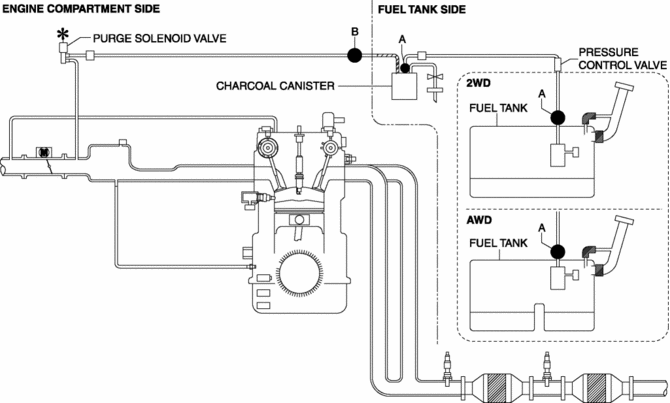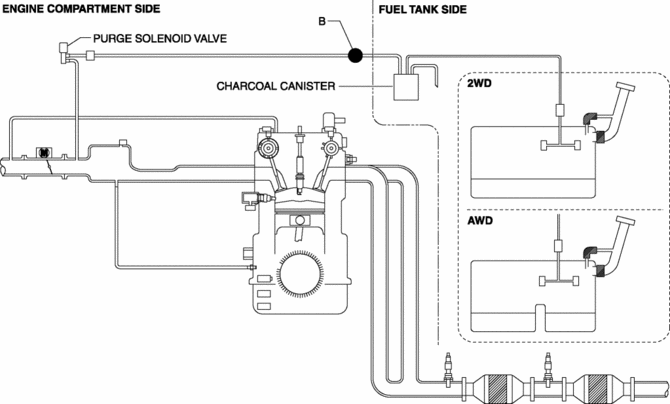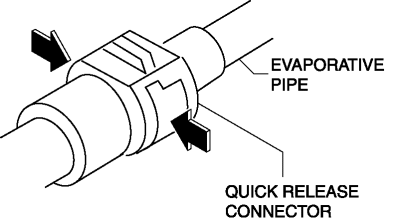Mazda CX-5 Service & Repair Manual: Quick Release Connector (Emission System)
Purpose, Function
-
Serviceability has been improved by the easy disconnection/connection.
Construction
-
The following types of quick release connectors are used.
U.S.A. and CANADA

Except U.S.A and CANADA

Type A
-
An SST is not used with this type.

-
Consists of a retainer and O-ring. The quick release connector is integrated with the evaporative hose and therefore cannot be disassembled.
-
To connect the quick release connector properly, push it into the evaporative pipe until a click sound is heard.
-
New quick release connectors are fitted with a checker tab that prevent improper installation. This checker tab cannot normally be removed. When the quick release connector is properly connected to the evaporative pipe, the lock is released and the checker tab comes off. Due to this, it can be verified that the quick release connector is completely connected.
Type B
-
An SST is not used with this type.
-
Mainly consists of a retainer and O-ring. The quick release connector is integrated with the evaporative hose and therefore cannot be disassembled.
-
When the quick release connector is connected, the evaporative pipe projection is locked at the clamp lock point. To release the quick connector lock for each type, follow the procedure in the order shown in each figure.

 Quick Release Connector (Emission System) Removal/Installation
Quick Release Connector (Emission System) Removal/Installation
Quick Release Connector Type and Position
CAUTION:
Verify the type and location, and install/remove properly.
U.S.A. and CANADA
Except U.S.A. and CANADA
Type A Removal
CAUTIO ...
 Rollover Valve
Rollover Valve
Purpose, Function
Prevents fuel from flowing into the evaporative gas passage during sudden
cornering or vehicle rollover.
Construction
The rollover valve is built into the fuel ...
Other materials:
Air Intake Actuator Inspection [Manual Air Conditioner]
1. Connect battery positive voltage to air intake actuator terminal B (or C),
connect terminal C (or B) to ground, and then verify that the air intake actuator
operates as shown in the table.
If the operation condition is not normal, replace the air intake actuator.
...
High Pressure Fuel Pump Control
Outline
Changes the fuel pressure applied to the fuel injector according to engine
operation conditions to improve engine output and startability.
The PCM determines the fuel pressure value corresponding to the engine operation
conditions based on the each input signal, and driv ...
Front Drive Shaft (Double Offset Joint) Disassembly/Assembly
1. Disassemble in the order indicated in the table.
2. Assemble in the reverse order of disassembly.
1
Boot band (transaxle side)
(See FRONT DRIVE SHAFT (TRIPOD JOINT) DISASSEMBLY/ASSEMBLY.)
2
Clip
(See Clip Disassembly Note.)
...
